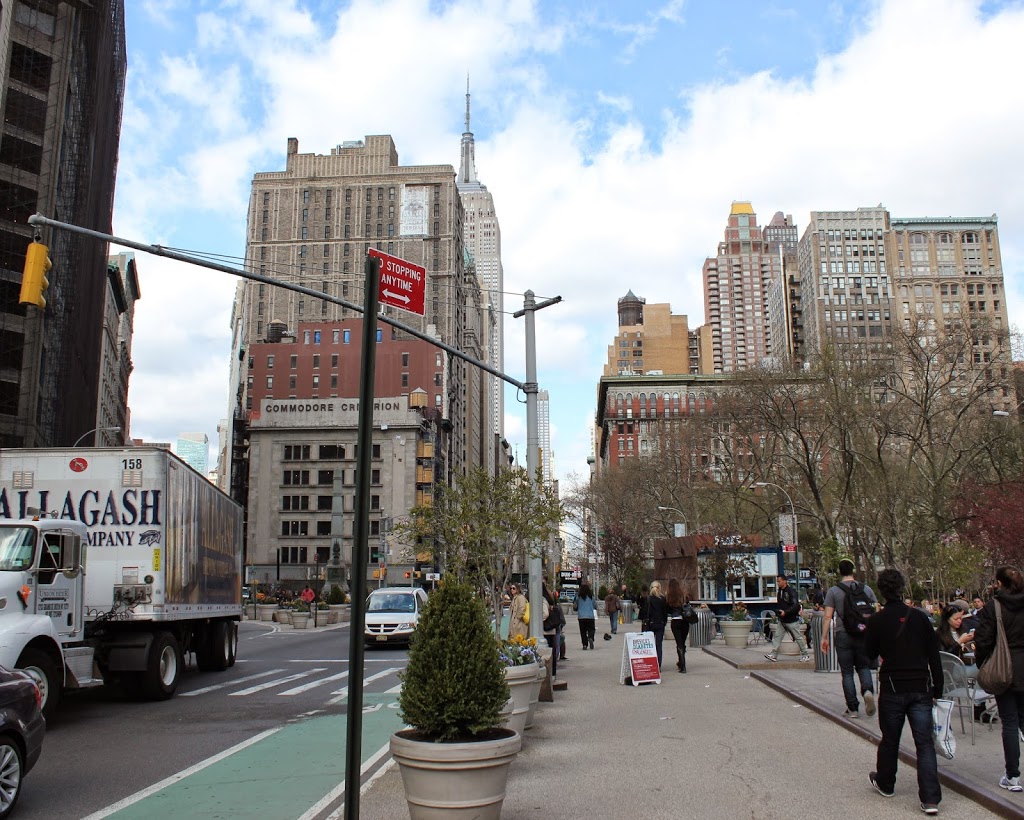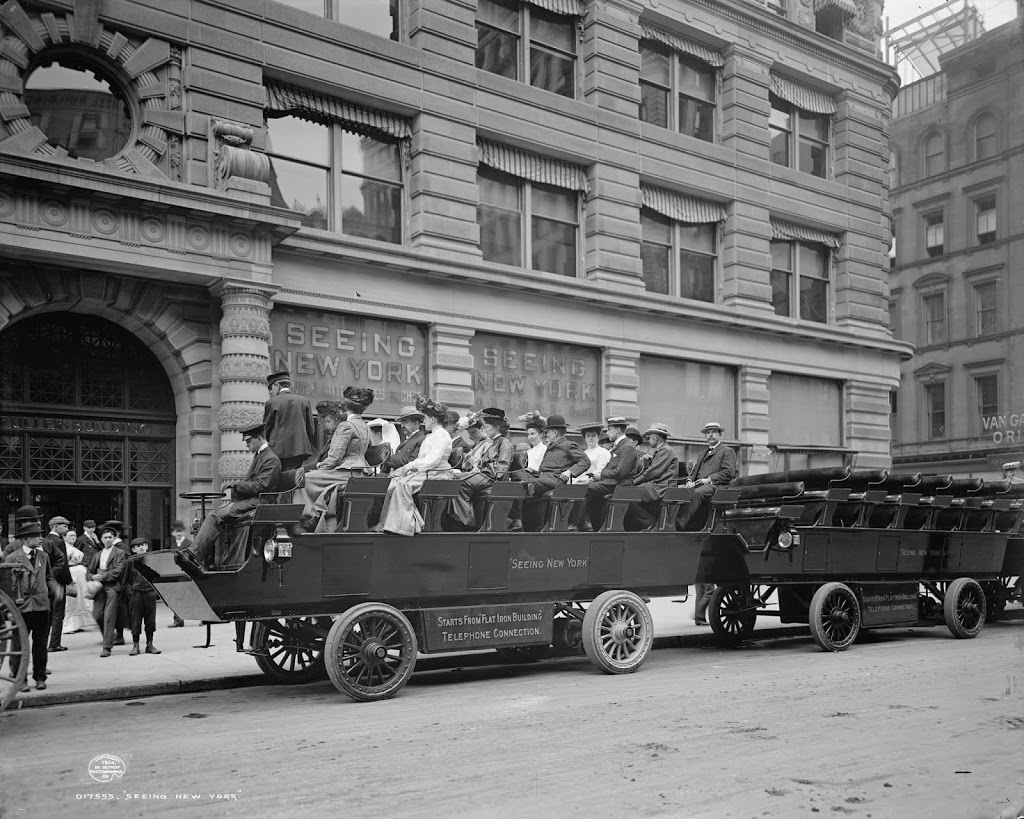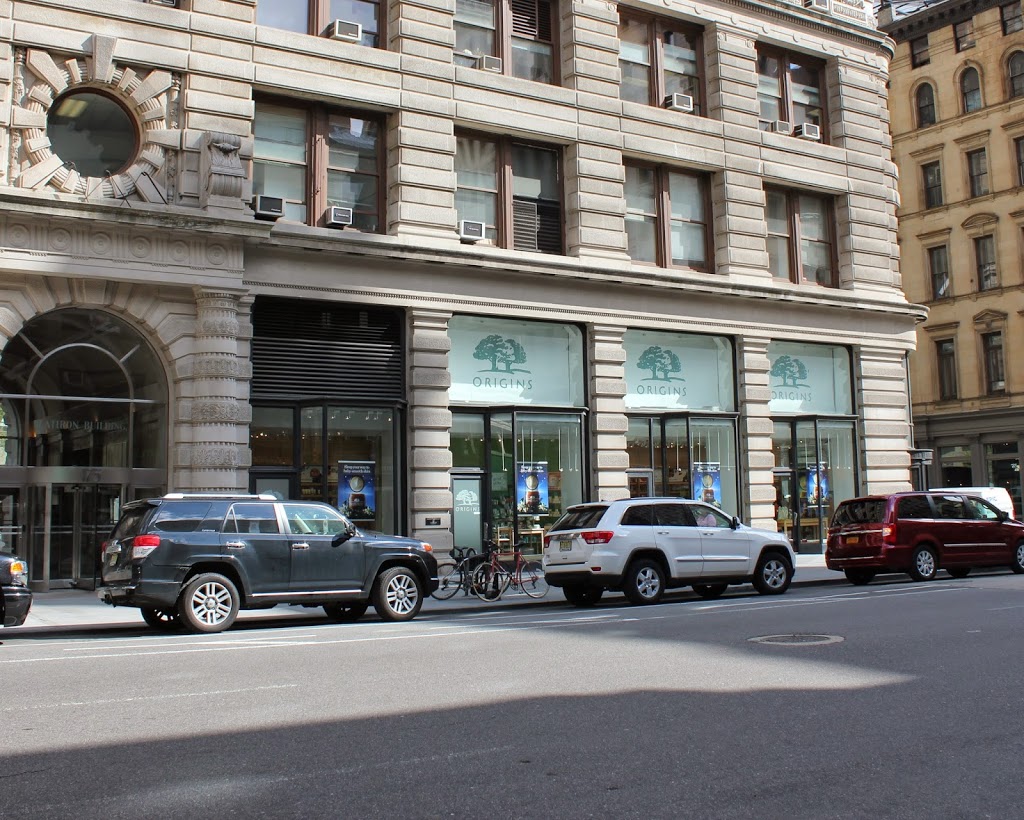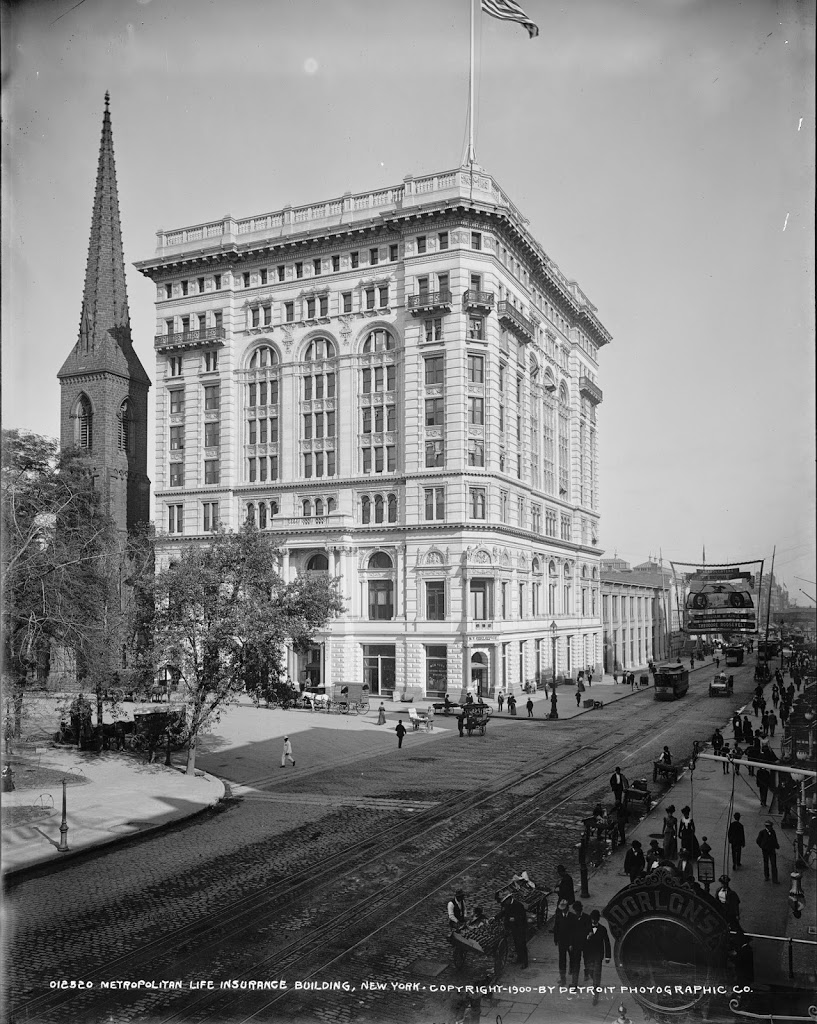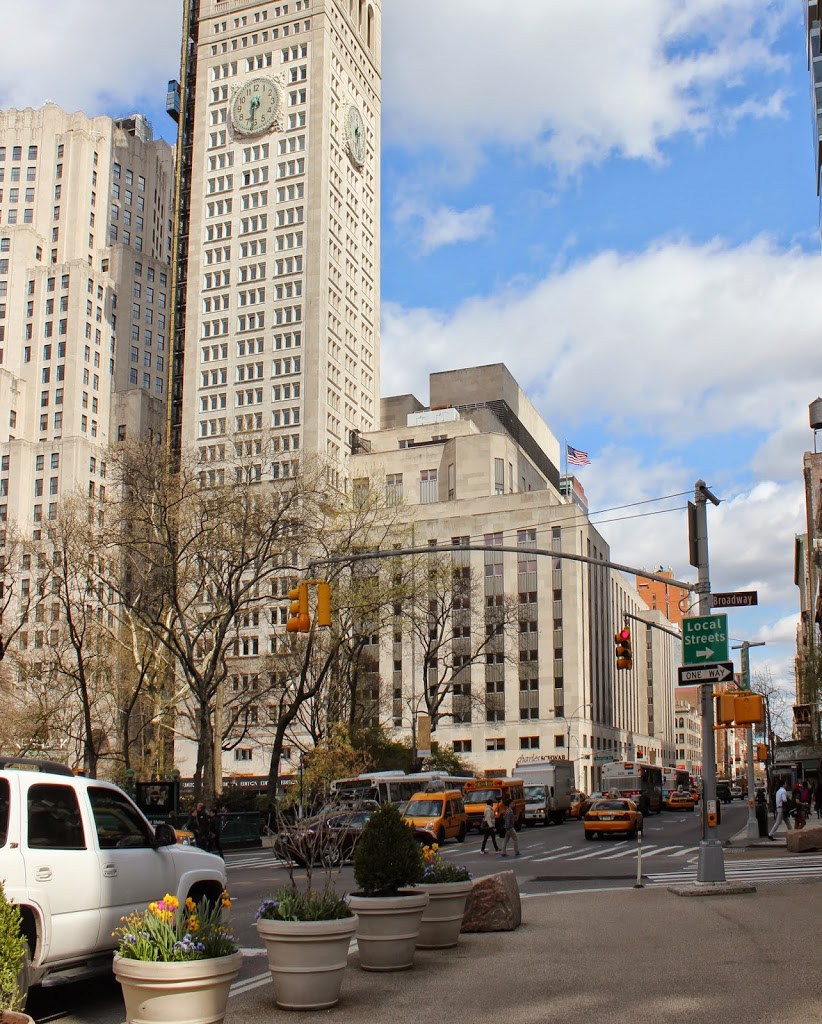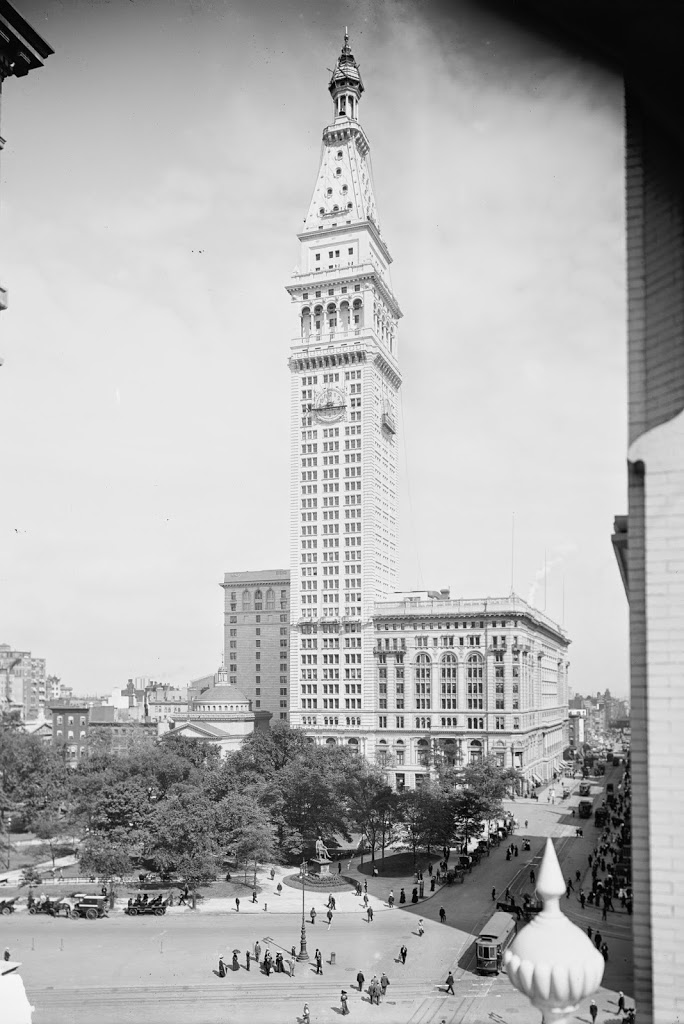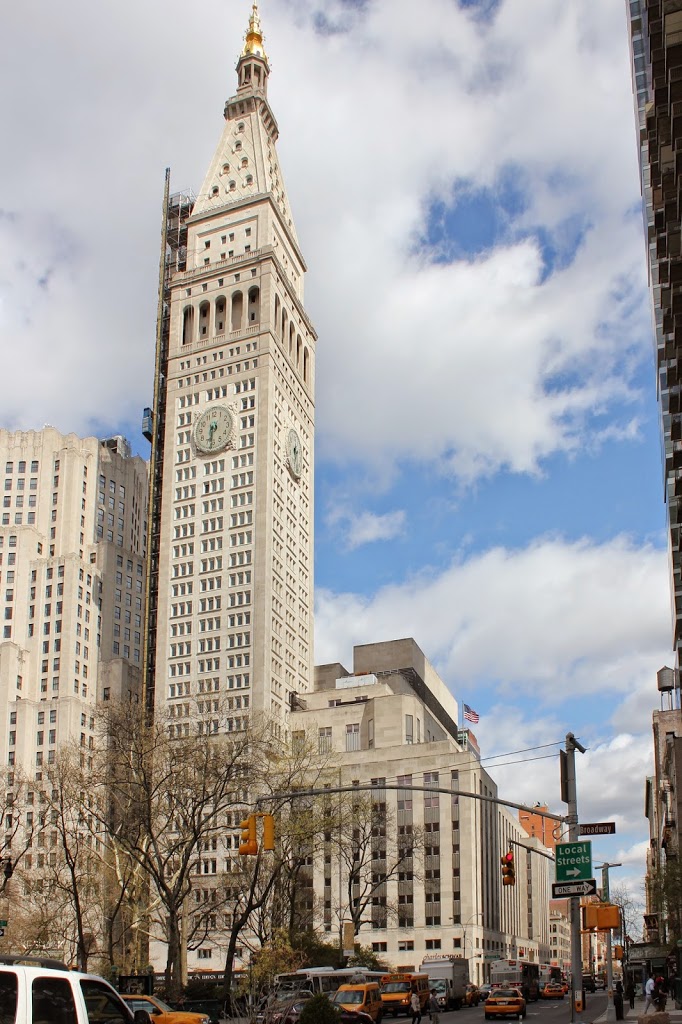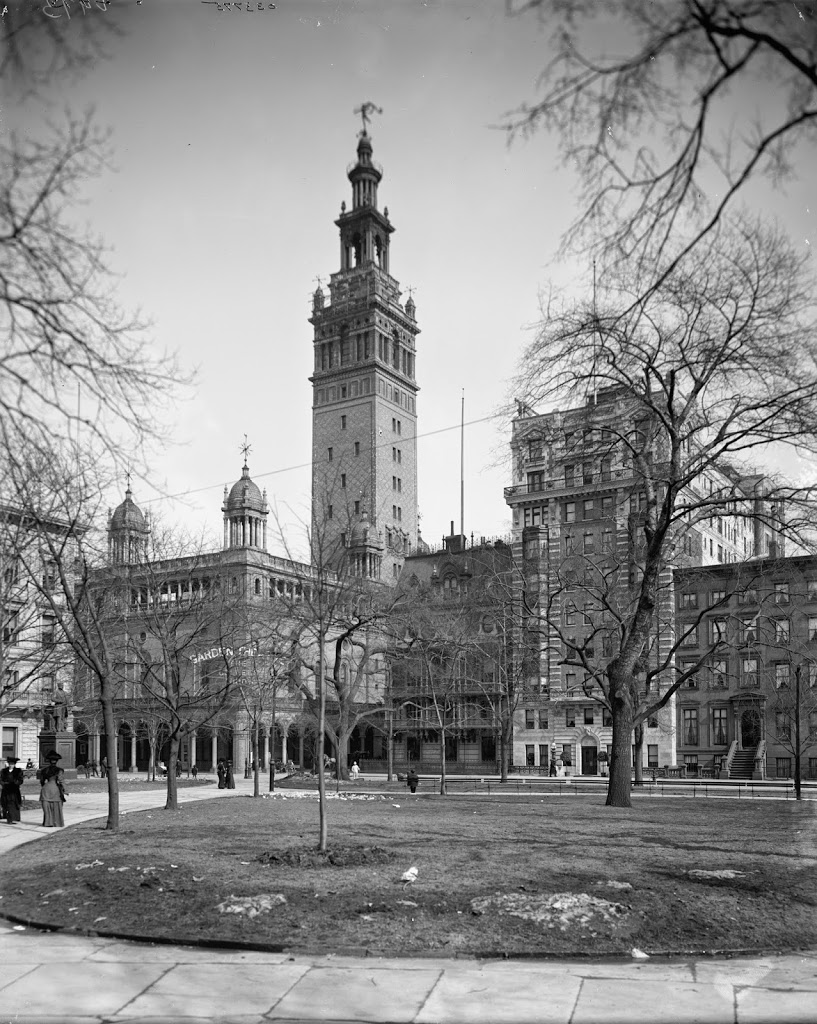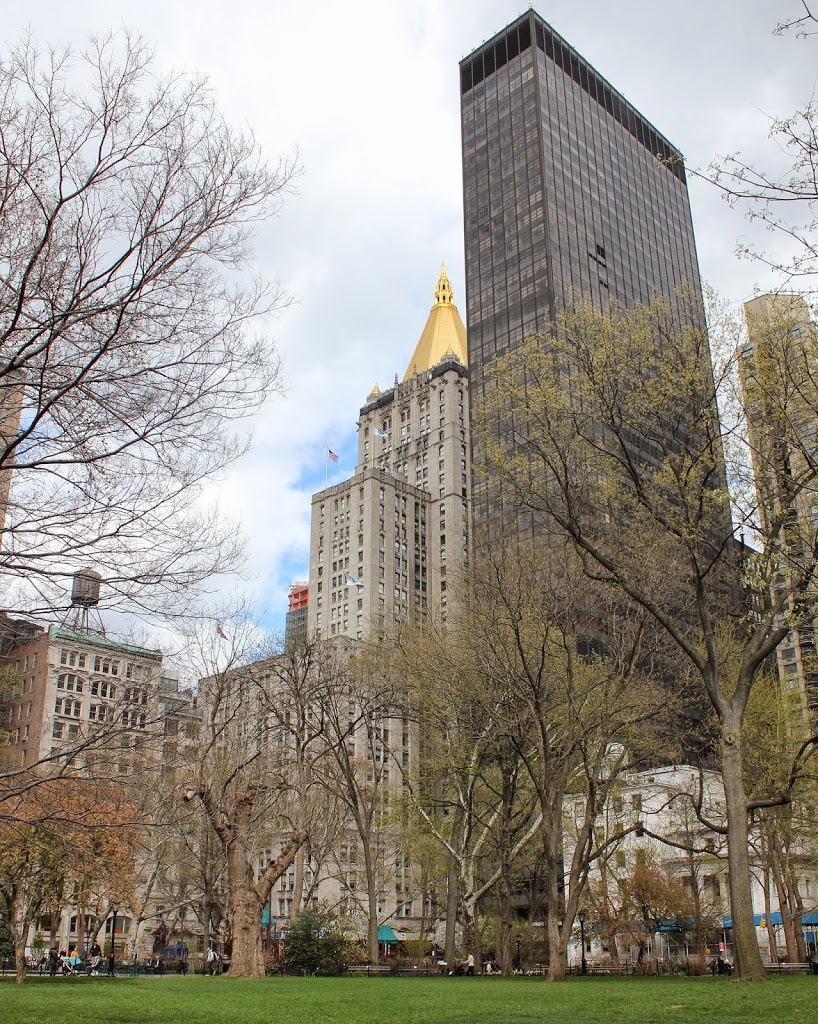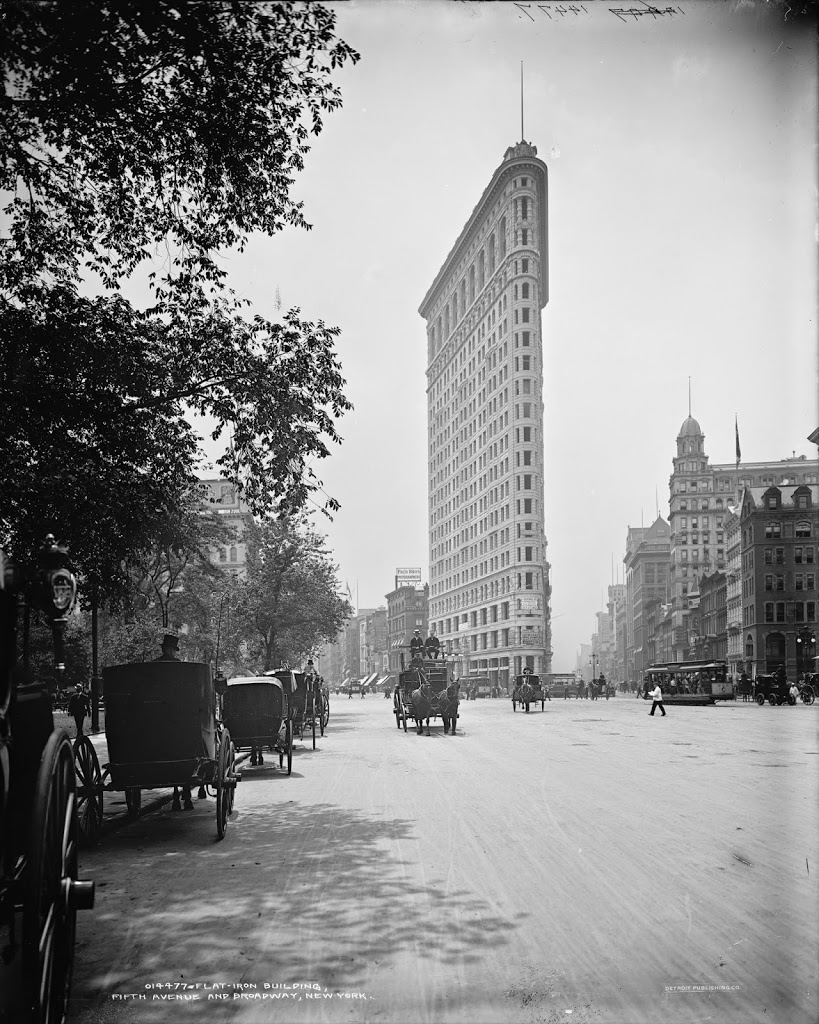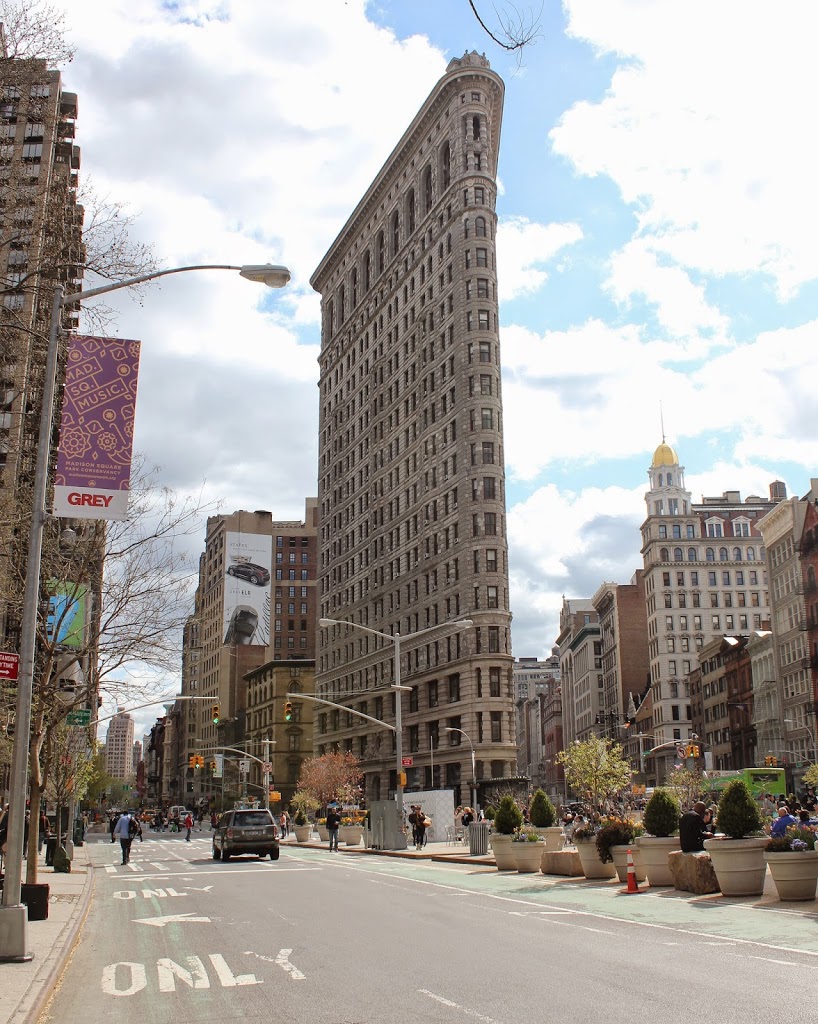The Dewey Arch at Madison Square, in 1899 or 1900. Image courtesy of the Library of Congress, Detroit Publishing Company Collection.
The scene in 2014:
Built across Fifth Avenue in 1899 to commemorate Admiral George Dewey’s victory in the Spanish-American War, the Dewey Arch stood at Madison Square for just a year before it had to be taken down due to deterioration; it had not been constructed out of particularly durable materials, although it fulfilled its purpose as part of the parade and celebrations in 1899 to honor Admiral Dewey. If it still existed today, it would certainly be interesting to see Fifth Avenue traffic trying to fit under it, so I suppose it’s better that it was taken down, anyway. Very little from the first photo still exists today, although one military monument does appear in both photos. The Worth Square Monument, visible in the distance just to the left of the Dewey Arch, was dedicated in 1857 in honor of General William Jenkins Worth, a New York native who served in the War of 1812 and the Mexican-American War.


